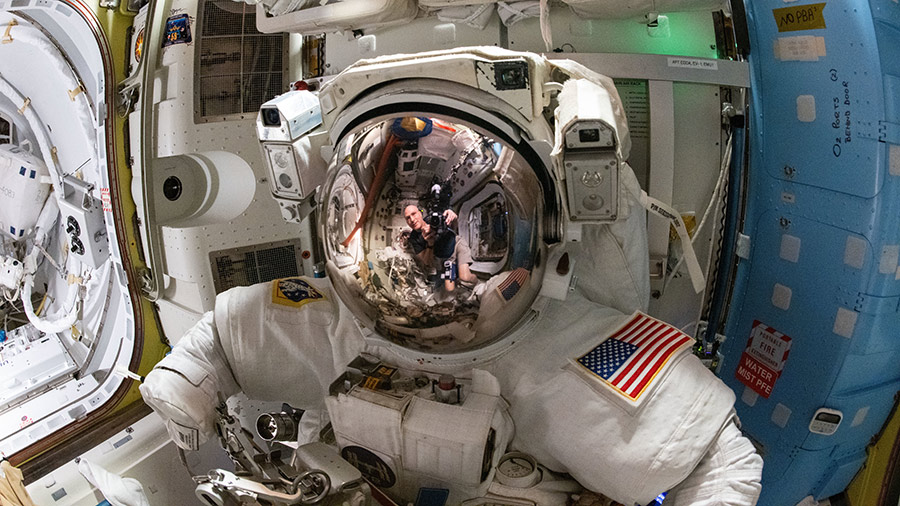
The week ended aboard the International Space Station with spacesuit maintenance and research into how microgravity affects blood pressure and breathing. The Expedition 72 residents also serviced a variety of hardware supporting science experiments and life support systems aboard the orbital outpost.
Two NASA astronauts, Commander Suni Williams and Flight Engineer Butch Wilmore, continued gearing up for a spacewalk scheduled to begin at 8 a.m. EST on Thursday, Jan. 30. Williams worked throughout Friday in the Quest airlock completing the charging of lithium-ion batteries that power spacesuits for the duration of a spacewalk. Next, she filtered and cleaned the water loops that cool astronauts in their spacesuits in the extreme environment of outer space. Wilmore pitched in and verified the functionality of spacesuit components including glove heaters, cameras, and helmet lights. The duo is preparing for a six-and-a-half-hour spacewalk next week to remove radio antenna hardware and search for microbes outside the orbital outpost.
NASA Flight Engineer Nick Hague began his day inside the Columbus laboratory module installing experiment containers on the BioLab, a biology research device that enables observations of microbes, cells, tissues, and more in weightlessness. NASA Flight Engineer Don Pettit activated life support gear in the Unity module and removed more life support hardware from the Tranquility module. The pair later met at the end of the day and reviewed procedures they will use in the future to service the external thermal control system that cools hardware on the outside of the orbital lab.
Roscosmos Flight Engineers Alexey Ovchinin and Ivan Vagner started their day on human research. This time, Ovchinin wore sensors that measured his exhalation following a deep breath helping doctors understand how microgravity affects the respiratory system. Vagner wore a separate set of sensors for a study observing how a crew member’s vascular system functions during a long-term space mission. Cosmonaut Aleksandr Gorbunov spent the first part of his day on orbital plumbing tasks in the Nauka science module then wrapped up his shift auditing stowage space throughout the station’s Roscosmos segment.
Learn more about station activities by following the space station blog, @space_station and @ISS_Research on X, as well as the ISS Facebook and ISS Instagram accounts.
Get the latest from NASA delivered every week. Subscribe here: www.nasa.gov/subscribe
